Polar bear at the North Pole. Interview by N. Ovsyannikov
For the first time people saw a polar bear at the North Pole. Until that day, it was thought that these animals do not go so far to the north. Now the Russian song’s words, “...bears chafe their backs on the earth’s axis” are confirmed. In the morning of the dive at the North Pole, a polar bear came to the icebreaker Russia. From the board of the research vessel Akademik Fedorov the bear was just discernible.

The Polar bear (Ursus maritimus) is a carnivorous mammal, a typical representative of the Arctic wildlife. For indigenous people it is a cult animal, a totem object, and a person in another guise. This is the only land mammal that has adapted to live on the drifting ice. It inhabits the area of floating ice near the shores of the Arctic Ocean. The body length can reach up to 3 meters and weigh up to 700kg. The fur is white, with thick undercoat. Even the lower surface of the foot is covered with hair. He covers its black nose with his paw only from the wind. These animals live up to 30 years. Polar Bears are great swimmers, and they can swim under the water up to 5-7 minutes. Polar bears perfectly orientate on the ice and under the ice. The main food is seals. Polar bears do not hibernate. In the winter only pregnant female bears hole up in dens located on the shore. The cubs, more often – two, are born in December and January; they are blind and helpless, weighing only 300 grams. At the end of March and April together with kids the mother-bear comes out of the den. The cubs do not leave their mother for about a year and a half.
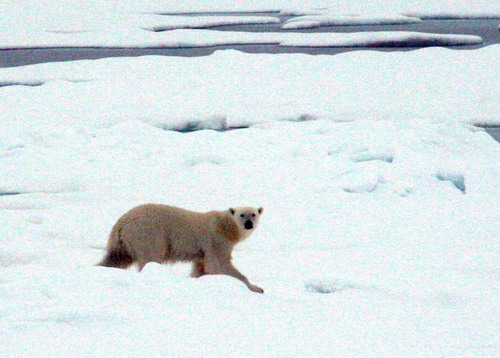
“The cubs play a lot, they are serene and clear. This is a wonderful sight!” said the Deputy Director of the Wrangel Island National Park, Nikita Ovsyanikov.
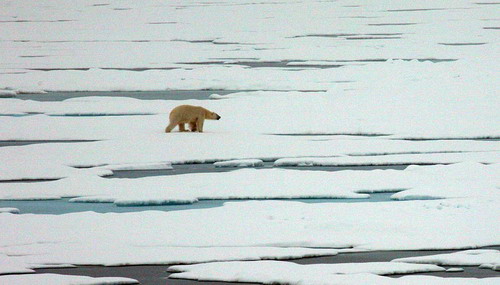
Nikita is selflessly devoted to his beloved animals. He can spend hours talking about the polar wanderers. His eyes shine with kindness and love. Only once he had a savage look, just once, his speech was evil and tough – when I asked about poachers. Although the habitat of polar bears is the most inaccessible on the earth, people over thirty years of the Arctic exploration brought this kind to destruction. According to some reports in the pre-industrial development of these territories, people shot about 150 thousand polar bears. By the way, the Soviet Union first introduced the ban on hunting polar bear in 1956, and in 1937, the Northern Sea Route administration prohibited to shoot polar bears from the board. Today, the number of unique, beautiful form is about 20-25 thousand.
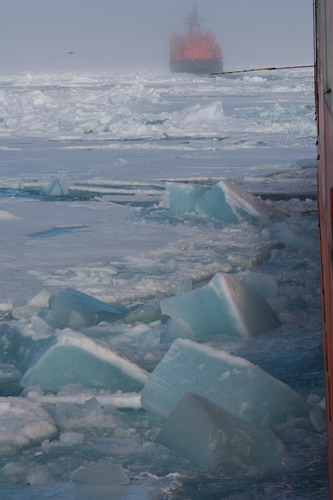
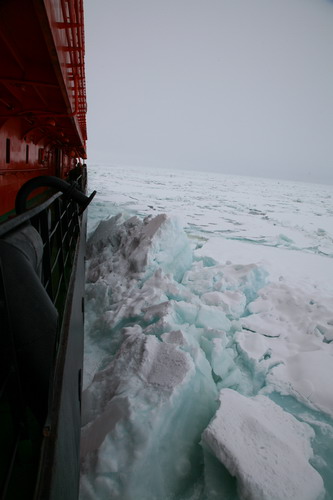
Corr.: Nikita, sometimes you live alone on Wrangel Island for a few months. You have only a small house and a fuel dump there. Wrangel Island is also called “maternity home” for polar bears; in different periods several hundred of them gather there. They come to your area ... How can you live next to these beautiful but dangerous carnivores?!
N.O.: First, it is not as dangerous as people might imagine not knowing its character. There are a lot of reasons to love the beast. In my opinion, this creature is a real miracle. I love it because it is very interesting, like an animal, like a living creature. I have been working all my life as a zoologist and studying animal behavior, and have never got such pleasure from the work and communication with the beast. With this big beast there is a moment of socialization, i.e., some personal relationships, personality traits.
Corr.: have there been any dangerous meetings with polar bears?
N.O.: Work in the Arctic is fairly dangerous. This is a harsh environment. It needs to be known. And we need to work professionally, and our professionalism means to understand, to feel all the details.
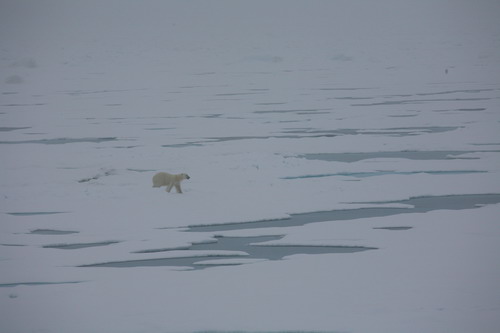
I’ve had hundreds of meetings with polar bears, at a short and very short distance. I have already been working with polar bears for 17 years. There were three cases when the animals attacked, and attacked in order to kill me. But only the three cases out of many hundreds. It suggests that this animal is actually not a monster, how it can be imagined. But all this was triggered by me, when I made some mistakes.
Corr.: You told us that the polar bear is a social animal that wanders not by one; they sometimes go to the jamb by a few individuals. Moreover, these beasts are still friendly with each other...
The polar bear is a very social animal, which clearly shows the desire to be among their own kind. A Polar bear is a typical nomad who does not guard the territory. He has a social affection.
For example, female bears with cubs and one female bear, or, for example, 2-3 male bears can be real friends. They tolerate each other, but always hunt one by one. Although they can share the meal with their fellow tribesmen, or to eat one quarry together.
The most pleasant to remember one bear, which always came in and tried to get in contact with me, even made me play invitations, which I did not answer because I did not want to teach it too close acquaintance with man, thinking primarily about its well-being. It was the only such a creature in my practice. I chased it when it came. It was quite friendly in nature, and still managed to drag me into the game. When I was running around, driving it, it came up with this: it ran around the house, first from one angle, then from another, making me run with it too.
But in fact, any familiarity with such a beast is not valid; sooner or later it is to lead to a conflict. For all the conflicts arising with the bear, the person who creates the conditions is responsible for.
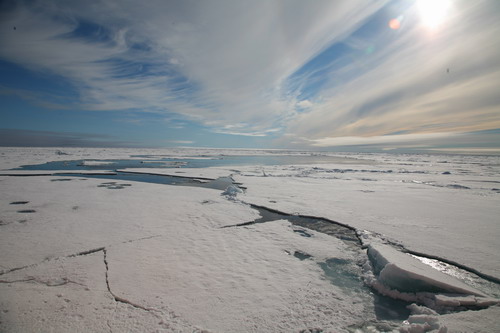
Corr.: Of course, such rules will be useful to very few people, but still, how should you behave when meeting a polar bear?
N.O.: The main thing is not to provoke incidents and situations when bears in anticipation of aggression, may attack.
Do not lure! Never, under no circumstances!
Do not let the animal make the mistake, identifying the man as food. That is, when you sit motionless on the ice, the bear can think you are a seal.
Do not create a situation of a sudden meeting. Elementary attentiveness. Be careful, watch carefully what is happening around you and avoid situations when a bear is near.
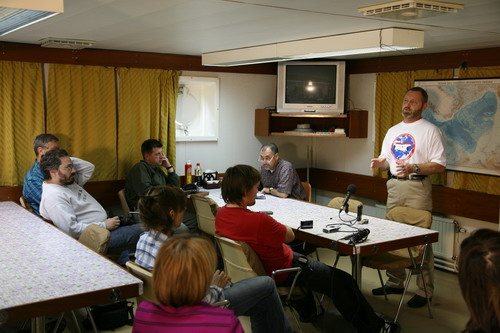
And if it is still near, do not panic, and act proactively in order to flap it away. What to do in this case? Under no circumstances show your fear. Shouting is useless. So is firing in the air. When the ice bursts the rumble is unusual, but the animal does not respond to any noise. It is also not afraid of rockets. You have to move towards the beast, to be active: waving your hands or a stick (in a documentary film Nikita is chasing a bear with his cudgel and the polar bear is running away). Once, a little bear, probably wanting to play, ran and leaped towards the male bear and it ran away.
Corr.: Russian citizens have chosen the polar bear as a symbol of the Winter Olympics in Sochi. But was Cheburashka rather supposed to be the symbol?
N.O.: The polar bear should be a symbol of the Olympics. It is a symbol of the Arctic; and Russia, of course, is the northern, the Arctic Power, and it has the biggest sector of the Arctic. I do believe the polar bear is a symbol of the country.
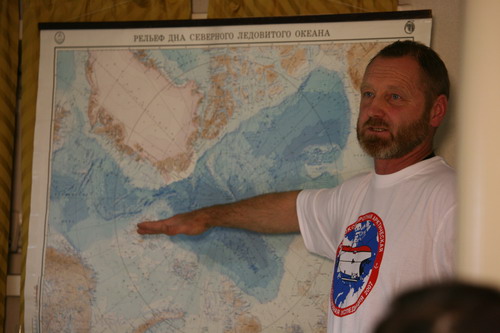
The question of MVK: What do you love the hardly coloured, cold, harsh Land – the Arctic – for?
N.O.: For clarity, first of all. And extreme. Because when you live and work long here, the essence of our being exerts most clearly.
Natalia Yurchenko
Press Secretary of Director General of MVK
The research vessel Akademik Fedorov, the Arktika-2007 expedition
The Arctic Ocean – the North Pole
